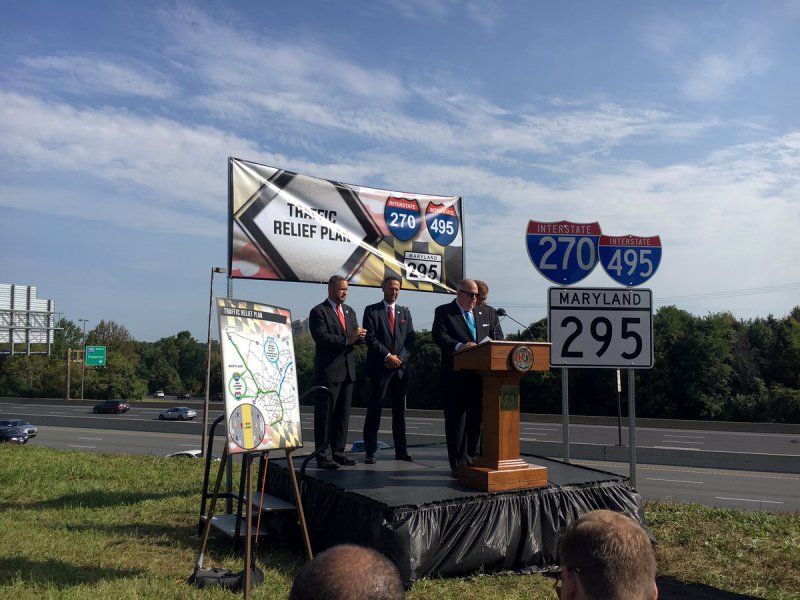Not so fast, says a University of Michigan researcher whose work is being held up to advance a controversial plan to widen virtually every highway in Maryland.
This week UM Professor Stuart Batterman spoke out against Gov. Larry Hogan's suggestion that widening highways would be — LOL — good for the climate.
Hogan is facing backlash from environmentalists and other groups for his massive $9 billion highway widening plan, which would involve widening I-270, I-495, and MD 295. Yesterday, in a "compromise" decision, the Maryland Board of Public Works voted to advance one less controversial segment of his proposal, with some funding for transit attached.
But not before Batterman had to chance to clarify his research in the Baltimore Sun. His 2011 study, evaluated how much carbon was released by cars under different conditions: rush hour congestion, work zones, and free flow conditions. The "emissions density" is worse in congested rush hour conditions, because a lot of cars are sitting around idling, which is not surprising.
But that finding does not support the popular conclusion that widening highways would reduce emissions, Batterman says in his letter. That's because highway widening tends to lead to more driving — a phenomenon known as induced demand. He wrote:
For example, an expansion adding four lanes to the existing eight lanes that soon reach capacity would represent a 50-percent increase in volume or [vehicle miles traveled], all things being equal. The change in the VMT would likely to be larger than the changes in the emission factors, and thus would offset any benefits of free flow conditions.
This is important. Because like Hogan, transportation planners across the U.S. use this same flawed spin to promote highway widenings. Indeed, as transit expert Yonah Freemark points out, they often use federal transportation funds designated for air quality improvement to pay for the widenings, on these grounds.
State DOTs *all over the country* make this argument routinely to argue for new lanes, bigger intersections, & more road expansion (because accounting for induced demand is considered non-kosher). Our MPOs then award these projects fed. CMAQ “air quality” money to pay for them. https://t.co/jft1BdyKhG
— Yonah Freemark (@yfreemark) June 6, 2019
Lindsey Mendelson of the Maryland Sierra Club said she is really disappointed the board voted to allow the project to move forward before that had been completed, especially considering it has a stated goal of reducing vehicle emissions from transportation 40 percent by 2030.
"We believe that with more added lane that there’s more vehicle miles traveled, more cars on the roads," said Mendelson. "Any of the positive impacts you might get by less cars idling might be offset by more cars on the road."
But nobody knows since the state hasn't completed any emissions modeling or an environmental impact statement for the project, she added.
"The one emissions study that they cited from Stuart Batterman they improperly used," Mendelson concluded.






